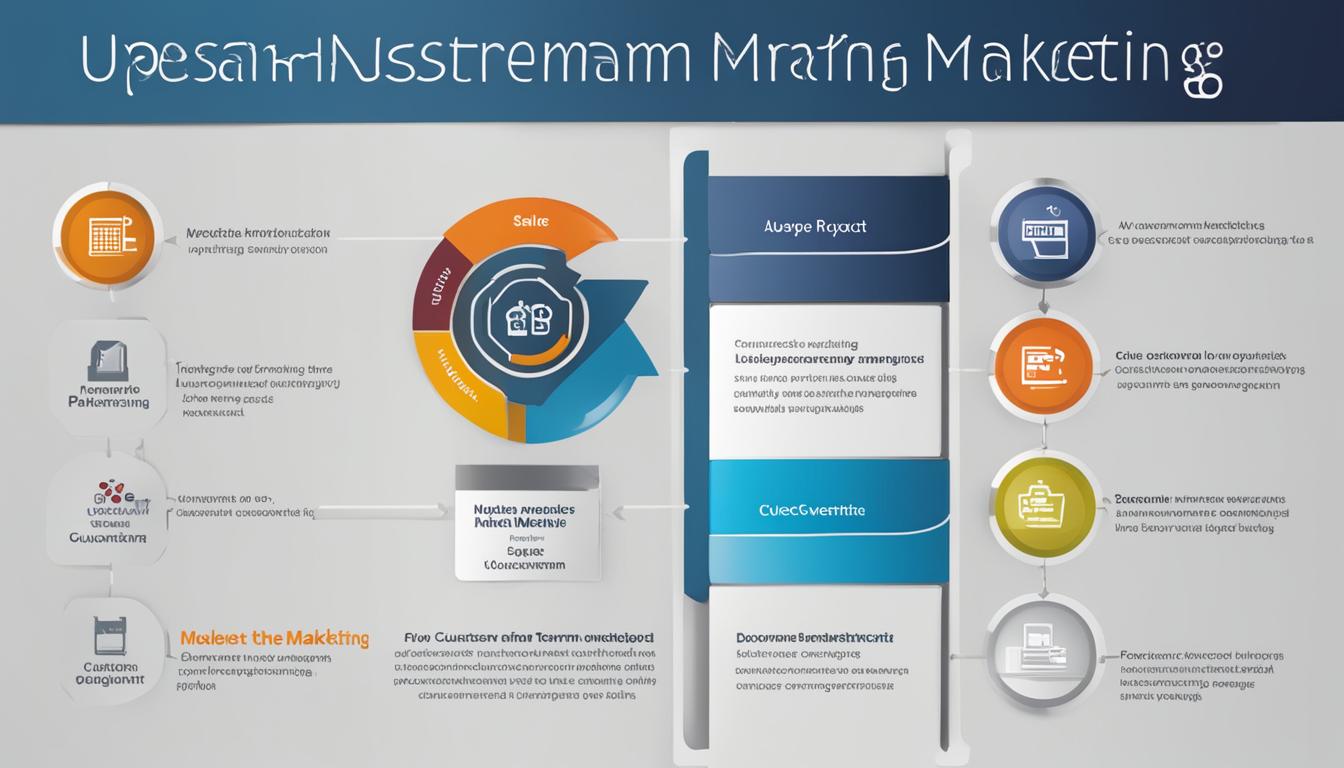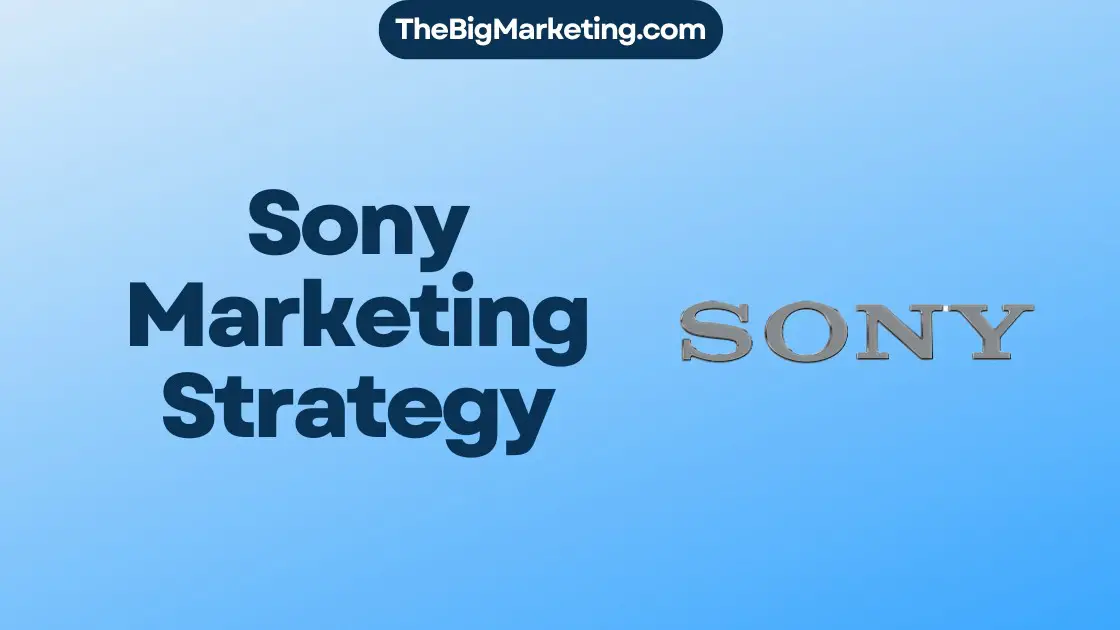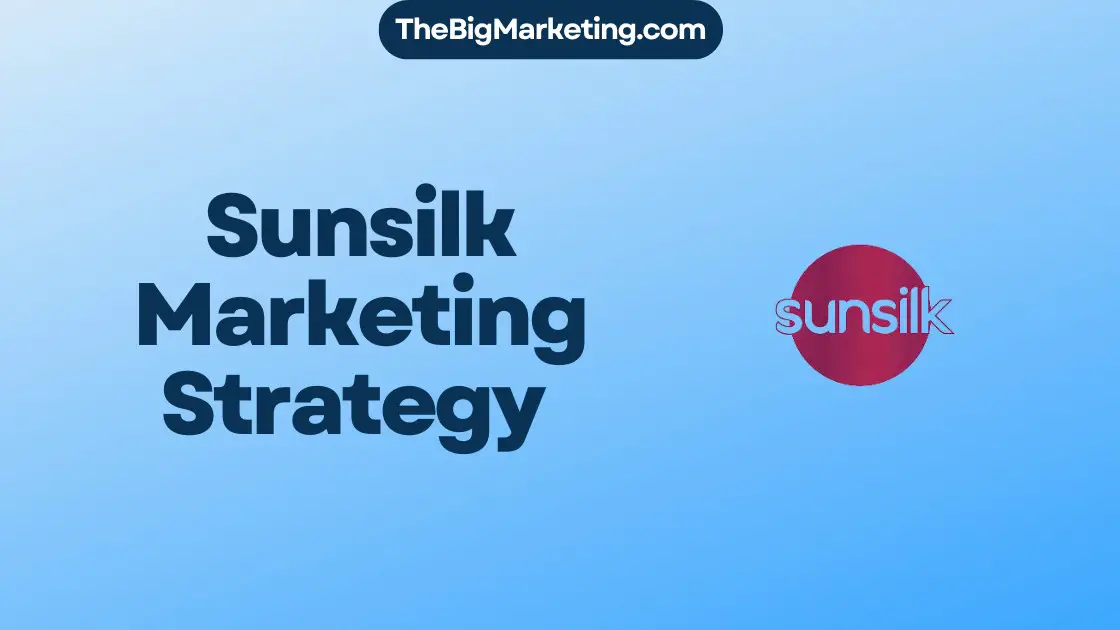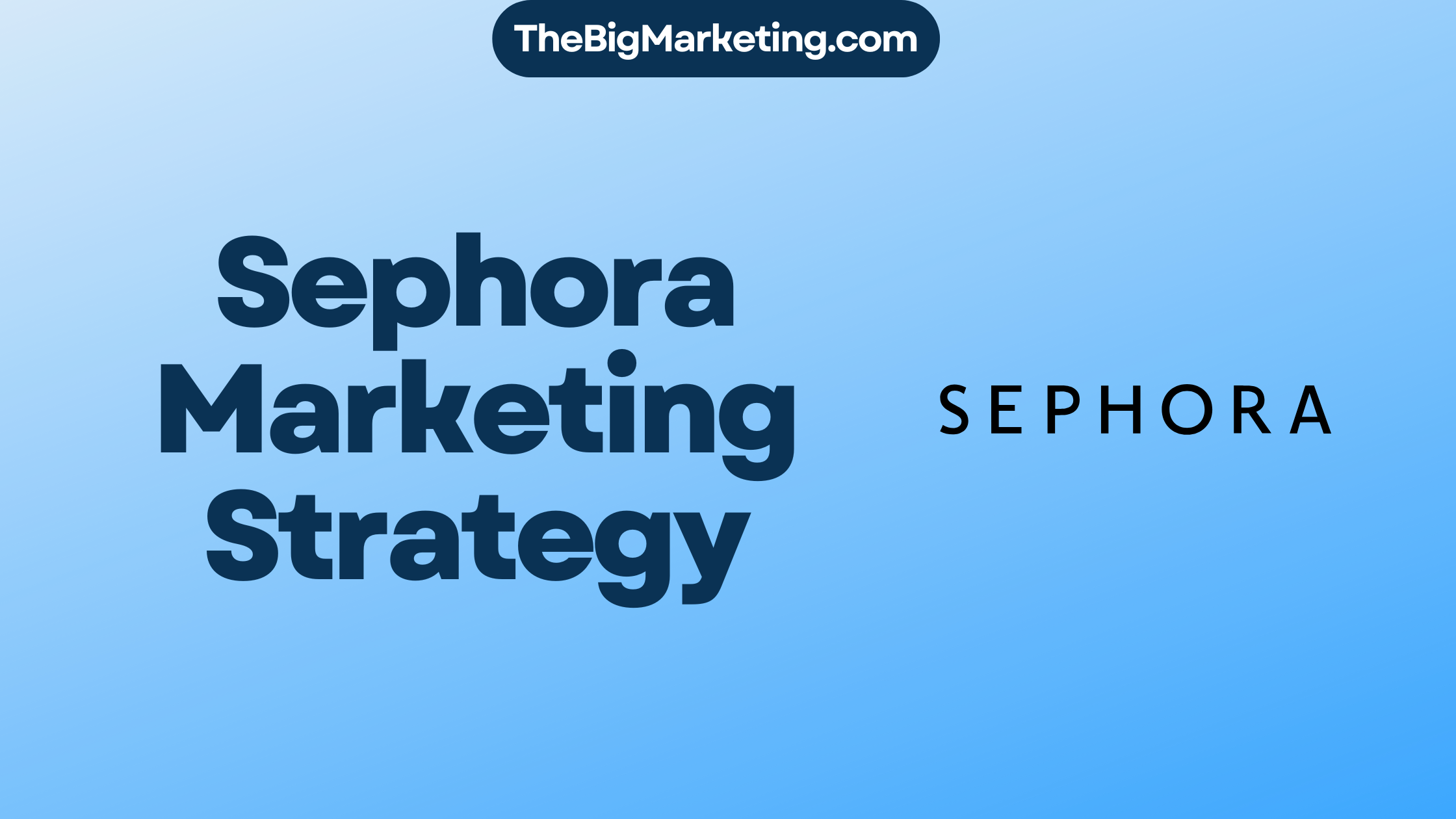In today’s competitive marketing world, it’s crucial to grab attention and keep audiences engaged. A marketing hook is a key tool for this. It’s a message or tagline that connects deeply with what the audience needs or wants. This tool not only grabs attention but also shows the value of a product or service, making a lasting impression.
We will look at examples of great marketing hooks from famous brands. Brands like Nike, KFC, Apple, McDonald’s, and L’Oréal have used clever strategies to draw in their audiences. By examining these examples, we learn how they crafted messages that stick in people’s minds and the tactics that made their campaigns stand out.
Key Takeaways:
- A marketing hook grabs the audience’s attention and resonates with their pain points or desires.
- Successful marketing hooks create a strong brand identity and foster deeper customer engagement.
- Examples from brands like Nike, KFC, Apple, McDonald’s, and L’Oréal showcase effective marketing techniques.
The Power of Emotional Engagement in Marketing Hooks
Marketing hooks that work well have something special: emotional engagement. They use human psychology to bring out certain feelings in people. This makes the audience connect more deeply. They lead to feelings of joy, surprise, creativity, happiness, and worth.
Getting the audience’s attention and making messages stick is all about emotional engagement. When hooks touch people’s emotions, they create a strong bond. This makes the message unforgettable. So, the audience keeps thinking about it.
Brands that use emotions in their marketing stand out. They show how their products or services matter in a more convincing way. This builds a personal link with the audience. It also creates trust and loyalty.
Emotional engagement helps get valuable feedback from customers too. When people feel connected, they’re more open to sharing their views. This feedback can guide future marketing plans.
To wrap up, emotional engagement is a key strategy in marketing. It harnesses human psychology to touch people’s emotions. This approach not only captures the audience’s focus but also strengthens relationships, shows value clearly, and gathers useful feedback.
Crafting an Effective Marketing Hook
To create a great marketing hook, first understand your unique selling proposition (USP) and your audience’s needs. Discovering what makes your product or service unique helps tailor a hook that stands out and connects with people.
Identifying your USP is crucial. This is the distinct value your product or service provides. Knowing your USP helps highlight the most attractive features of what you offer.
Understanding your target audience is next. Find out their needs, desires, and issues your product or service solves. This knowledge lets you customize your marketing hook to their specific circumstances, making it more effective.
With your USP and audience knowledge, think of hooks that match your brand and grab attention. Using stories, humor, or emotions can connect with your audience more deeply. Always stay true to yourself to make a real impact.
It’s then time for A/B testing. Try different hooks to see which ones get the best response. A/B testing helps in making choices based on real data, improving your hook’s effectiveness.
Using your marketing hook consistently is crucial. Apply it everywhere, from your website to social media. This consistency helps in building brand recognition and makes your message stronger in the audience’s memory.
Summing up, crafting a strong marketing hook involves knowing your USP, understanding your audience, brainstorming hooks, A/B testing, and consistent application. These steps help create a hook that truly attracts and engages your target audience.
| Key Steps to Crafting an Effective Marketing Hook |
|---|
| Identify your unique selling proposition (USP) |
| Understand your target audience’s challenges and pain points |
| Brainstorm potential hooks that capture attention and resonate with your audience |
| Test your hooks using A/B testing |
| Consistently apply your marketing hook across all channels |
The Role of Hooks in Marketing Campaigns
Hooks play a crucial role in marketing campaigns. They grab attention and help brands stand out. By using hooks, businesses make sure their messages are memorable. This way, they highlight their product’s key benefits, which gets customers interested.
Attention-grabbing hooks engage customers emotionally. They help create deeper connections and can lead to valuable feedback. When customers feel this connection, they’re likely to stay loyal to the brand.
To use hooks effectively, brands have to craft messages that resonate. They should clearly show the unique benefits of their products. By solving the target audience’s problems, brands can create engaging hooks.
Hooks need to be consistent across all marketing channels. Whether it’s on a website, social media, or in emails, the message should be the same. This consistency builds brand recognition and makes a lasting impact on customers.
The importance of hooks in marketing cannot be overstated. They’re key to making brands memorable and conveying their value propositions. With compelling messages and consistent use across channels, brands can launch successful marketing campaigns.
Strategies for Creating an Effective Marketing Hook
Crafting an effective marketing hook is crucial for standing out. To grab your audience’s attention, you need a strong strategy. Focus on what makes your offering special, understand your audience, and be creative. Here’s how to make your hook truly memorable:
- Understand your unique selling proposition: Know what makes your product or service better than the rest. Ask yourself what unique value you provide. Highlight this in your marketing hook to show the benefits you offer.
- Identify your target audience’s needs and pain points: Get to know what your audience really wants and what problems they have. With deep market research, create a hook that speaks to their needs directly.
- Think creatively and embrace out-of-the-box thinking: Stand out by thinking differently. Brainstorm fresh, unexpected ideas that grab attention. Don’t be scared to challenge the norms of marketing.
- Test and refine your hooks: Test your ideas with A/B testing or focus groups. Find out which hooks work best. Use this feedback to make your marketing hook even stronger.
- Consistently apply your marketing hook: Use your marketing hook everywhere for brand recognition. This keeps your message unified and strengthens your unique selling point.
- Embrace authenticity: Authenticity makes your brand stand out. Make sure your hook reflects your brand’s true values. Customers love genuine messaging.
Employing these strategies will help you create a marketing hook that not only grabs attention but also builds meaningful connections. A strong hook is key to distinguishing your brand and driving your marketing campaigns to success.
The Marketing Hook That Sets You Apart
To make an effective marketing hook, start by getting to know your audience well. Learn what they want, need, and the issues they face. This helps create an offer that really stands out. Do thorough research to find what’s missing in your industry’s conversation.
Be creative in your approach. Think of ways to offer something new and exciting. This could mean introducing an innovative solution. By providing something both interesting and useful, your audience will take notice.
Here, we compare two marketing hooks: a traditional one versus a creative one.
| Traditional Approach | Creative Approach |
|---|---|
| Generic messaging that focuses on product features | Compelling storytelling that highlights the customer’s journey |
| Similar offers to competitors in the industry | A unique and relevant offer tailored to the specific needs of the audience |
| Conventional marketing tactics | Out-of-the-box thinking that surprises and delights the audience |
The creative approach is more effective. It makes a stronger connection with the audience. By knowing your audience’s deep insights, you can craft hooks that truly speak to them.
So, dive deep into your market research. Find what makes you unique. Use creativity in your marketing hooks. Doing this will make your audience pay attention, position your brand as an industry leader, and get great results.
Using Weaknesses as a Marketing Hook
Turning weaknesses into powerful marketing hooks means getting ahead of possible objections. First, see your product or service like your customers do. Think about their possible objections based on what they want and like. Also, getting feedback from customers helps find any weaknesses.
Next, it’s key to use these weaknesses to your advantage. Show how your product’s benefits outweigh its weaknesses. This way, you can make your product look like the best option for your customers.
Let’s take a software product that’s a bit pricier than others as an example. Don’t ignore this fact. Instead, talk about its extra features, great customer support, and how it saves money over time. Pointing out the value your product offers can turn a weakness into a strong selling point.
Example: Turning Weakness Into Strength
| Weakness | Attention-Grabbing Leverage Point |
|---|---|
| Limited number of cybersecurity experts | Expert team comprised of industry-leading professionals |
| No round-the-clock support | 24/7 customer support for critical incidents |
| High implementation cost | Significant cost savings in the long run with reduced cyber threats |
This cybersecurity company tackled objections head-on. They showcased their expert team, 24/7 support, and the long-term savings. By flipping weaknesses into strengths, they stood out as a top choice for cybersecurity needs.
Using weaknesses as a marketing hook shows you’re open and trustworthy. Be sure to share how you address customer concerns in all your marketing. This approach will help you win over customers and stand out.
The Big Gain Marketing Hook
This marketing hook draws people in by showing the benefits of meeting goals and fixing problems. It looks at your audience’s issues and aims. Then, it connects your product or service to their wishes.
First, know the troubles and challenges your audience faces. What are their main struggles? Then, find out their goals. What do they hope to reach? This understanding helps you make a hook that talks directly to them.
Next, point out how your product or service can help. How does it solve their problems? How does it help them reach their goals? Use engaging language to show the good outcomes they can get from your product or service.
This marketing hook works by showing people the great possibilities ahead. It acts as bait, pulling them in. It shows how your offer can meet their goals and wishes. This way, you can win them over as customers.
To show how effective this marketing hook is, here’s a table:
| Customer Pain Points | Goals | Advantages |
|---|---|---|
| Struggles to lose weight | Achieve a healthy body | Customized workout plans and personalized nutrition guidance |
| Overwhelmed by financial debt | Attain financial freedom | Debt management tools and expert financial advice |
| Feeling unfulfilled in career | Find a fulfilling job | Career coaching and job placement assistance |
The big gain hook focuses on pains, goals, and benefits. It shows a clear way to success. It points out how your offer helps them beat challenges and reach goals. This draws people in, showing them a path to what they want.
Using this hook, you can send a strong message to your audience. Tempt them with what they can gain. You’ll see them become keen to connect with your brand.
The Importance of Attention Control in Marketing
Attention control is key in marketing. It helps keep your audience interested and trusting. Our world is full of ads competing for attention. So, grabbing and keeping your target audience’s focus is crucial. It might seem good to have a large audience. But reaching a small group with a strong hook is usually better.
To grab your audience’s attention, you need effective hooks. These hooks enhance your marketing success. Keeping your audience’s interest means using strategies that meet their needs. By doing this, you engage them more, build loyalty, and increase sales.
Having control over attention can bring loyal customers. When customers feel understood, they stick with your brand. Regular messages that meet their needs build trust. This trust boosts their satisfaction and the value they bring over time.
Targeted Marketing Efforts
To control attention well, you must know your audience. Find out what they like and what problems they have. Then, you can make messages that really speak to them. By dividing your audience and customizing your messages, your campaigns will catch their eye. This leads to real engagement.
Long-Term Benefits
Attention control has many long-term perks for your marketing. It keeps your audience engaged and helps your brand stand out. This turns into more loyalty, repeat buys, and good reviews. Plus, attention control helps you build lasting relationships. This means more value from each customer and chances for recommendations.
| Key Benefits of Attention Control in Marketing |
|---|
| Enhanced brand recognition and trust |
| Increased customer loyalty and satisfaction |
| Higher customer lifetime value |
| Potential for referrals and brand advocacy |
Conclusion
Crafting effective marketing hooks is key for successful campaigns. You need to know your audience and what they want. Also, think outside the box and try different ways to grab their attention. This helps you connect on an emotional level and share what makes your offer special.
Emotion is super important in marketing hooks. When you reach people’s feelings, they pay more attention. Learning about what makes people tick and making them feel good, surprised, or inspired is crucial. This way, you build stronger connections and show the true value of what you’re selling.
To win in campaigns, having something special to offer is a must. Figure out what makes you stand out, and tell your audience about it. Making sure your hooks are used the same way everywhere and checking their impact with A/B tests is important. This ensures your message really speaks to people in a genuine way.







